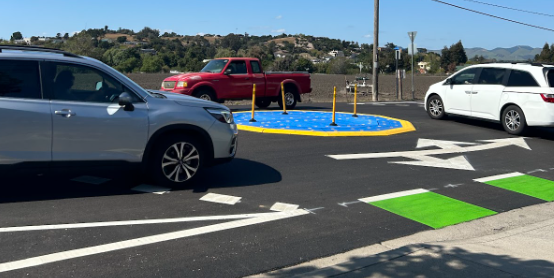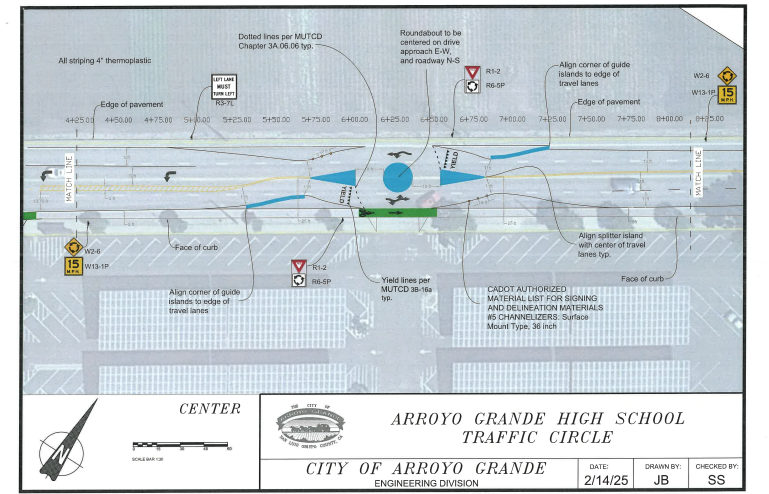The new Fair Oaks roundabout has sparked controversy across campus. Some staff and students praise the roundabout while others claim it makes traffic worse, adding significant amounts of time to students’ commutes and inducing much confusion between students and locals.
“It doesn’t seem like it makes traffic much better, and I think a lot of people get really confused by it,” Kinsie Colbourn (‘25) said.

There were several faculty members spectating the new traffic flow on the first day, including Principal Brad Grumbles, Executive Director of Facilities Andy Stenson, and several highway patrol officers. However, much confusion and delay still occurred.
“I think it slows down more traffic and causes more pauses in traffic [due to] yielding and right of way [confusion],” Jacob Kreowski (‘26) said.
There are very few roundabouts in SLO County, and many inexperienced drivers in the area have been through very few, if any of them. Despite this initial challenge, there’s hope of confusion subsiding over time as students adapt to the roundabout’s structure and rules.
“Coming from experience, I think that the roundabout slows traffic down,” Malia Dolittle (‘26) said. “It takes me about 10 more minutes to get home after school.”
While the roundabout wasn’t necessarily constructed to aid in the speed of traffic flow, it has been notably adding to students’ commutes, resulting in late arrivals to school or after-school activities.
“It makes traffic 20 minutes slower and stresses me out so bad,” Sadie Pierce (‘26) said.
Driving in heavy traffic is already a stressful situation for many students—the new addition of the roundabout seems to be making the situation worse for some.
“The cops make it even more stressful,” Stella Dowlan (‘26) said.
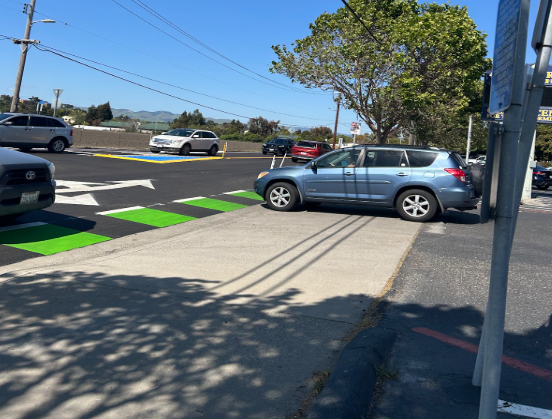
While the police vehicles and highway patrol officers were only present to make sure everything went smoothly and educate those who might be confused, their presence significantly bothered many students and elevated the stress of the situation.
One of the main reasons for confusion and congestion is seemingly not the traffic circle itself, but the new ‘right turn only’ lane that follows it.
“You can’t be in the right lane—that used to be for anyone who wasn’t turning into the school lot—anymore,” Carly Gallagher (‘26) said. “So, it’s adding a bunch of new traffic into the singular traffic lane.”
While the roundabout and turn lane might make it significantly easier and faster for traffic turning in and out of the parking lot, it makes it more time-consuming for through traffic.
“I have to go to the back lot, and it makes it way longer for me because I can’t go through in the other lane,” Mariella Conn (‘26) said.
Students who have to park in the back lot or elsewhere than the main school parking lots have reported difficulty getting to class on time, given that through traffic is slowed down, and drivers have to make quick lane changes to avoid getting stuck in the turn lane.
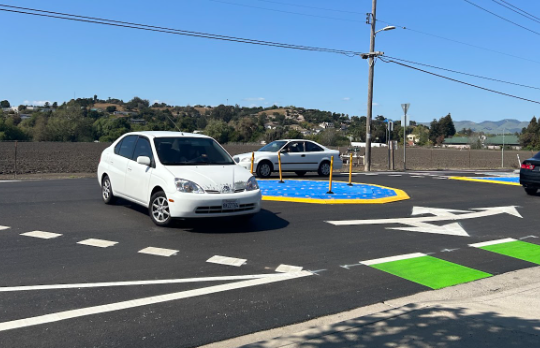
“It’s making my drive longer because I have to drive past the school,” Gallagher said. “I have already been late twice because of it.”
Some new and experienced drivers have less to say, noting that the traffic circle accomplishes its intended purpose, of allowing the legal left rather than enhancing the speed of traffic.
“I think it’s functioning properly,” Principal Grumbles said.
While many students are either bothered or rejoiced by this addition, the majority seems to be unfazed or getting used to its changes.
“It’s alright,” Garrett Marin (‘26) said.
On the other hand, some praise the roundabout for making traffic smoother and making the left turn achievable.
“I honestly like [the roundabout] a lot, other than people not understanding how it works,” Emma Dodson (‘25) said. “It’s easier for me to make a left because I have to in order to get home, but I hate when people fly through it without stopping.”
Several faculty members have reported feeling proud of their students for properly adapting to the situation, claiming that they have learned how to utilize the traffic circle effectively.
“I think most students are doing great,” AP history Kelli Peters said, “[The roundabout’s] main purpose was to create a left turn, and that’s exactly what it’s doing.”
The change is not only a severe adjustment for students, but the community as a whole.
“I am pleasantly surprised that the Arroyo Grande community has successfully learned to navigate [the roundabout], I was anticipating confusion and chaos,” English teacher Christian Holst said.
A common trend seems to be showing that it is mainly adults, parents, or other Arroyo Grande locals, rather than students, who have been adding to the confusion and creating difficulty.
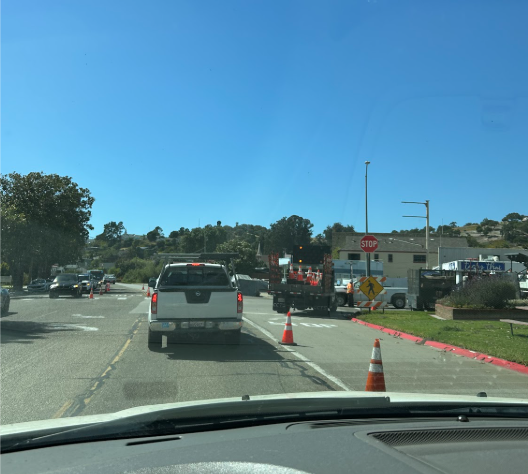
“I’ve noticed that it’s not really students, but [those] who are getting frustrated by it and are trying to just go [through],” Holst said. “[People] are flying through the [new] right turn lane, and it’s causing chaos.”
Even students recognize this trend, noting that community members seem to be either disregarding it or simply not using it properly.
“Parents don’t know how to use it, and people keep stopping completely instead of using it,” Dominic Logoluso (‘25) said.
As aforementioned, many citizens of SLO County, old and new drivers alike, are relatively inexperienced with roundabouts, leading to some initial confusion.
“It’s mostly adults and not high schoolers that don’t know how to use it,” Marco Auyong (‘26) said.
The addition of the roundabout has posed a difficult adjustment for students and adults alike. Therefore, the community as a whole needs to properly adjust to and learn how to incorporate the roundabout into their daily commutes.
While it may pose difficulty and delay at first, the roundabout will ultimately work with the incoming installation of a stoplight at the Fair Oaks off-ramp to make traffic flow even smoother and faster for all of those involved.

